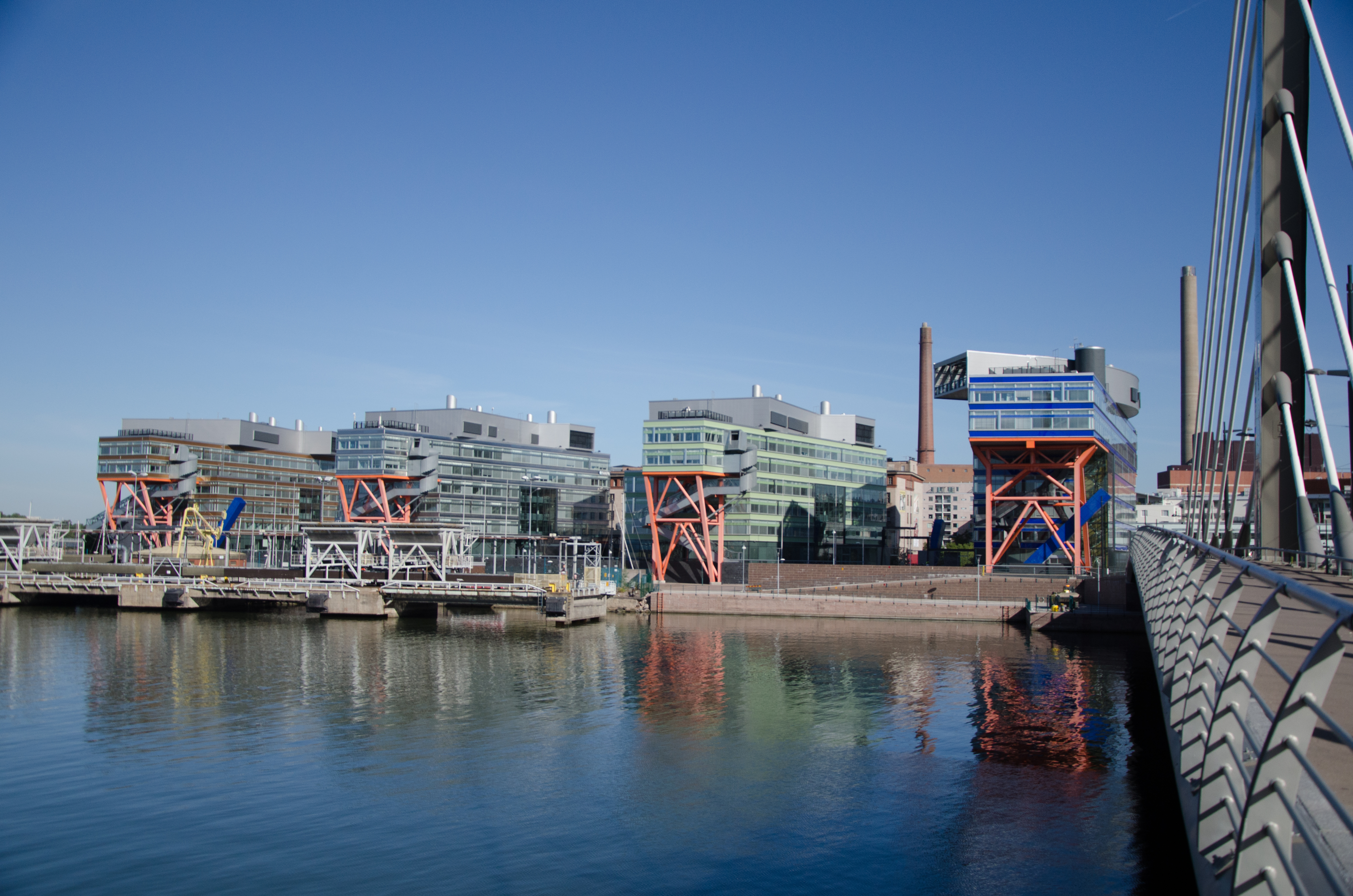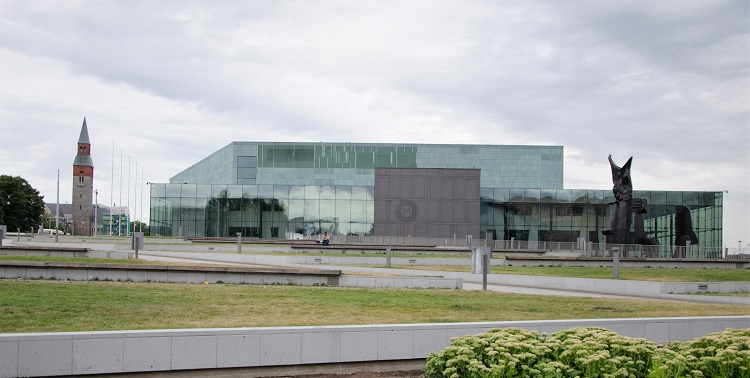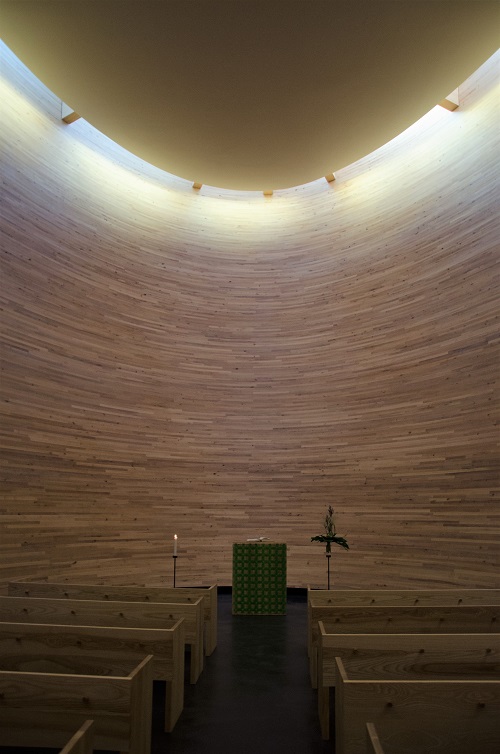Prominent 21st century architecture in Finland
Recent Finnish architecture of note includes civic, cultural and religious works, ranging in style from neo-modernism to the more culturally referenced.

The multi-use Kamppi Centre (2006) in Helsinki, executed by a consortium of architects, exemplifies a new scale of urban intervention for Finland. Near the Kamppi Centre are LPR Architect’s Music Centre (2011), ALA Architects’ Central Library (2018), Helin&Co Architects’ Finnish Parliament House addition (2004), and JKMM Architects’ Amos Rex contemporary art museum (2018). Other critical civic works include Laiho-Pulkkinen-Raunio’s Turku Art Academy (2000), the Sibelius Hall (2000) in Lahti by Lintula and Tikka, JKMM Architects’ Turku main library (2006), Juhani Pallasmaa’s Korundi House of Culture (2011) in Rovaniemi, and Anttinen Oiva Architects’ Helsinki University library (2010).

LRP Architects, Music Centre (2011), Helsinki. The green copper-paneled auditorium volume is set with an elegant glazed foyer. Photo: Krysta Mae Dimick
Recent waterfront works include the Allas sea pool (2017) by Huttunen Lipasti Pakkanen Architects, avanto architects’ Loyly sauna (2016), and ARK-House Architects’ Seafarers’ Centre (2009) – all in Helsinki – and Lahdelma & Mahlamäki Architects' Maritime Centre Vellamo (2008) in Kotka.
While Arto Sipinen’s Innova office tower (2004), Heikkinen and Komonen’s Emergency Services College (2005) in Kuopio, and ARK-House’s Korona Information Centre (2000) demonstrate a rigorous neo-modernism, Kai Wartiainen’s crane-like Ruoholahti High Tech centre (2001), Nurmela-Raimoranta-Tasa’s Katajanokanranta housing complex (2006), JKMM Architects’ animated Seinäjoki library (2012), and alt Architects’ Lehtikangas elementary school (2017) are more exploratory design expressions.

K2S Architects, Kamppi chapel of silence (2012), Helsinki. The elegantly crafted wooden chapel is a place of quiet, repose, and contemplation in the busy world of downtown Helsinki. Photo: Krysta Mae Dimick
Religious architecture represents among the best culturally referenced, place-distinctive works in Finland. These include K2S Architects’ Kamppi Chapel of Silence (2012), JKMM Architects’ Viikki Church (2005), Juha Leiviskä’s Helsinki Church of the Good Shepard (2002), Matti Sanaksenaho’s St Henry’s Ecumenical Art Chapel (2005) in Turku, and Järvinen & Nieminen’s Laajasalo church (2003) in Helsinki. Lassila Hirvilammi Architects produced three significantly striking works: The Klaukkala church (2004), the Kärsämäki church (2004), and the Koukkala church (2010) in Jyväskylä.
HALO Architects’ Sami cultural centre and parliament house Sajos (2012) in Inari has elliptical parliament and auditorium spaces placed within a curved cross-shaped form.